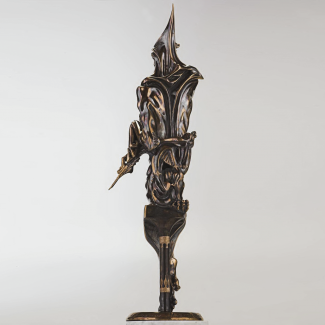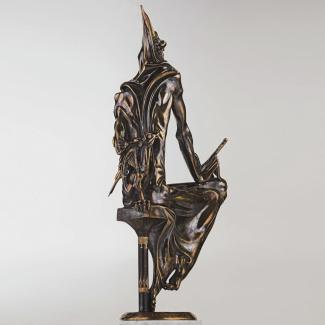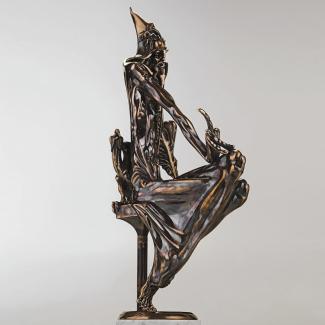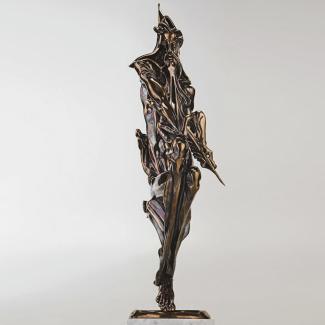«Part of the Power that would
Always wish evil, and always works the Good…
I am the spirit, ever, that denies»
Goethe «Faust»
Mephistopheles is an embodiment of the evil spirit in the art of people of different countries. The name has a Greek origin and means “the one who does not like light”. Despite being a symbolic figure, Mephistopheles has an individual personality: he is clever, brave, witty, mischievous and at the same time he can be merciless and ruthless. God needs him as there can be no movement forward if the old and obsolete is not left behind. Everything he does, his inconstancy and searching that he laments, are part of God’s will. However Mephistopheles is not only a social but also a philosophical symbol. Mephistopheles is an embodiment of denial. He tells himself:
I deny everything and this is my essence...
Denial, though, is just a turn in the spiral of progressive development. “Evil” that is
personified by Mephistopheles becomes an impetus to the movement directed against evil.
Today no one imagines the Prince of Darkness with horns and hooves. His appearance has become more sophisticated. The spirit of doubt and disbelief, he does not set out against God, but rather helps him, testing people’s belief: if the belief is strong, so is the person’s connection with God. How prepared are we to follow our principles and ideas in life when our mind allied with our fears and habits whispers into our ear about the vanity of any efforts and spiritual strives and urges us to live by our earthly wishes? Or, perhaps, subduing to something more profound, and namely the belief in our hearts, the mind enables us to cognize the world and realize our dreams.
The Satan’s shadow appears every time a person faces a choice. Polar opposites make the world go round. Everything comes from God, be it good or evil, light or darkness.
Symbols.
Mephistopheles’ forefinger of his right hand is raised in warning. It means that the choice is made by the person but the consequences of the wrong choice are determined by the Prince of Darkness. With his left hand Mephistopheles is writing his own variant of human history.
The Chimera is peeping out from behind his shoulder with curiosity. In Greek mythology the chimera is one of the children of the dark forces, a monster. It symbolizes danger and delusion. The chimera is a personification of dangers lying in wait for people. In gothic tradition chimeras became an attribute of allegorical images of sins; they symbolized vice and had the function of intimidation. The figure of the chimera was an illustration of how the soul of the person tortured by desires becomes a prisoner of the animal nature.
The medieval cloak with a hood is a symbol of magic power.
Through the sculpture the author is looking for answers to the eternal questions of being. What are we striving for in this world? What do we believe in? Can belief awaken our hearts and reconcile our craving for the faraway horizons with the skill of valuing every moment of life with its sufferings and joys? Can it connect high dreams to life and give both sense?…



